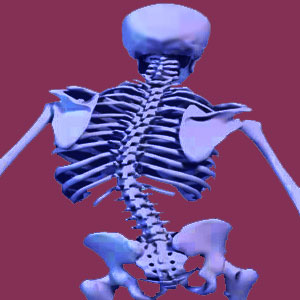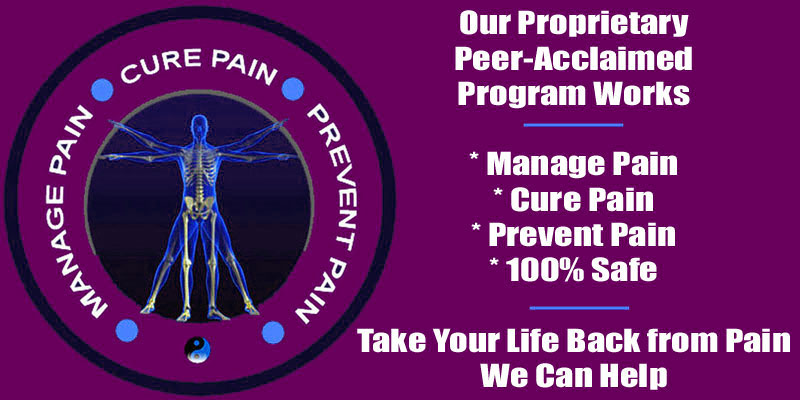
There are many scoliosis causes and contributors which are directly or indirectly responsible for creating atypical side-to-side spinal curvatures. Scoliosis is usually considered an idiopathic condition, meaning that is has no definitively known origin. However, some cases are easily traced to verified circumstances that have facilitated scoliotic development within the spinal column. Each different type of scoliosis will typically demonstrate completely unique causative or contributory factors, when any at all can be identified. Remember that scoliosis comes in several forms and each variety is likely to come about as a result of totally distinct scenarios.
This resource section covers the causative and contributory explanations for the formation of scoliosis in the human spine. We will examine a diversity of causative processes and detail the types of scoliosis each is likely to produce. If you are curious about where scoliosis comes from, then this article is just what you need to learn about all the potential answers to this common inquiry.
Direct and Indirect Scoliosis Causes
The most common form of scoliosis is certainly idiopathic adolescent spinal curvature. In these cases, there is no known reason why the condition occurs or what could be done to prevent it. Despite decades of intensive study, doctors are still not privy to the underlying circumstances that facilitate this most frequently demonstrated form of scoliosis.
Congenital scoliosis can be a result of various neuromuscular diseases, some of which are detailed in the section below. The condition can also be linked to various birth defects and structural abnormalities. Some of the risk factors for congenital scoliosis are unknown, although behavior and general health patterns of the birth mother factor into many cases. Women who are in poor health, abuse substances or have certain diseases are more prone to carry fetuses that will be affected by various birth defects, such as congenital scoliotic development.
Likewise, infantile and juvenile scoliosis may be idiopathic or linked to genetic or congenital conditions that cause scoliotic curvatures to develop as the child begins to grow. Once again, these conditions are more prevalent in babies born to unhealthy and/or substance abusing mothers. There may be a genetic link that predisposes some children to the development of scoliosis earlier in life.
Adult developed scoliosis is not generally caused by any congenital or genetic abnormality. Instead, developed scoliosis is usually the result of various factors on a case-by-case basis, including injury, spinal deterioration, poor posture, muscular imbalances and disease acquisition.
Topical Dialogs About the Causes of Spinal Curvature
Congenital scoliosis describes conditions that are present from birth, as well as structural abnormalities that dispose a child to developing scoliosis as they grow.
Genetic scoliosis can be transferred from generation to generation via the DNA code passed from parents to offspring. Many types of scoliosis might have links to genetic development.
Scoliosis from injury is a major source of adult atypical spinal curvature. Injury can reshape the vertebral anatomy, potentially causing side-to-side spinal curvature.
Scoliosis and spina bifida are often found in the same patient. Various forms of spina bifida can also contribute to the formation of scoliotic curves in the backbone.
Scoliosis and cerebral palsy are often present together, since CP is known to create postural changes in the body and anatomical imbalances. Scoliosis and muscular dystrophy are also commonly associated for the very same reasons.
Scoliosis from different leg lengths is a common condition that can be very complicated to accurately diagnose. This is because the scoliosis can sometimes be the cause of different leg lengths in some patients, while the different leg lengths can be contributory to the development of scoliosis in others.
Scoliosis from spinal syrinx formation can be a very serious occurrence. Syringomyelia and hydromyelia are clinically significant spinal issues that often result in widespread problems and the development of dramatic scoliosis. Scoliosis from Arnold-Chiari formation is often also found in syringomyelia patients, but sometimes exists without a spinal syrinx being present in the vertebral anatomy.
Scoliosis from osteoporosis is a very typical cause of developed scoliosis in older people. Osteoporosis is a very pathological condition, since it facilitates major health concerns, such as compression fractures, spinal instability and the development of various forms of atypical backbone curvature.
Summation of Scoliosis Causes
Not every case of scoliosis can be definitely traced to a known origin. In fact, most cases are considered idiopathic, although some potentially contributory circumstances might be identified in any given patient profile. In reality, it is not crucial to know what actually caused scoliosis, as much as it is vital to experience proper diagnostic evaluation, enlightened treatment recommendations and a complete understanding of the true nature of the condition.
Let’s move onward and take an in-depth look at the possible signs and symptoms of scoliosis. Remember, while every case has telltale anatomical markers, only a minority of people will suffer pain or neurological effects from their atypical spinal curvature.





